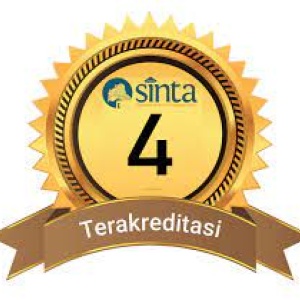Pirasat dan Kitab Taj As Salatin: Tinjauan Poskolonialisme pada Ilmu Fisiognomi
DOI:
https://doi.org/10.37014/jumantara.v14i1.3332Keywords:
Pirasat, Kitab Taj As Salatin, postcolonialisme, Firasat knowledge, PhysiognomyAbstract
Traces of the past can be seen in Pirasat and Taj As Salatin which show the attitude of locals towards foreign nations. This study aims to reveal the resistance of the locals as reflected in the two texts to add information about the history of the colonial period in Indonesia. This study will use a literature comparison method with a postcolonial review as the main instrument in reviewing the resistance of locals to the invaders in the Pirasat and Taj As Salatin. The form of resistance is shown by the locals by giving bad descriptions of people with the physical shape or form of the invaders, like blue eyes (embarrassing) and yellow hair (not virtuous). The mention of these body parts refers to Europeans as evidenced by the presentation of the distribution of blue eyes and yellow hair which are very common in that region. The results of the research from the two texts show that the locals have shown passive-aggressive resistance as seen from the physical mention of the invaders who although not explicitly stated as colonizers, it is certain that there can be no locals with that physical description.References
Ahmad, Nur Fauzan. "Fisiognomi Imam Syafii dalam Naskah Wirasat Sapii". NUSA 13, No. 2 (2018): 301-315.
Anderson, Benedict. Komunitas Imajiner: Renungan tentang Asal-usul dan Penyebaran nasionalisme. Yogyakarta: Pustaka Pelajar-Inst. 1999.
Anggradinata, Langgeng Prima. "Model Kajian Sastra Bandingan Berpsektif Lintas Budaya (Studi kasus Penelitian Sastra di Asia Tenggara". Salaka 2, no. 2 (2019): 76-85.
Asimov, W. C. B. a. I. Races and People. London and New York: ABELARD-SCHUMAN. 1968.
Baried, Siti Baroroh. Pengantar Teori Filologi. Repositori Kemdikbud. Pusat Pembinaan. 1985.
Behrend, T.E. Katalog Induk Naskah-naskah Nusantara, Jilid 4: Perpustakaan Nasional Republik Indonesia. Jakarta: Yayasan Obor Indonesia. 1998.
Faruk. Belenggu Pasca-kolonial Hegemoni dan Resistensi dalam Sastra Indonesia. Yogyakarta: Pustaka Pelajar. 2007.
Daulay, Saleh. Filsafat Politik Melayu: Kajian Filologis dan Refleksi Filosofis Terhadap Kitab Taj al-Salatin karya Bukhari Al-Jauhari. Yogyakarta: Litera. 2020.
Goodley, Alvin. "4 Rarest Hair Colors in the World". Rarest.org. Diakses 20 September 2022. https://rarest.org/people/haircolors#:~:text=People%20with%20black%20hair%20vary,Southern%20Europe%2C%20and%20Latin%20America
Griff, Ann Marie. "Worldwide Eye Color Percentages". Healthline. Diakses 20 September 2022. https://www.healthline.com/health/eye-health/eye-color-percentages
Iskandar, T. Kesusasteraan Klasik Melayu Sepanjang Abad. Jakarta: Libra. 1996.
Istiqamatunnisak. "Perlawanan Rakyat Aceh Terhadap Belanda Dalam Karya Sastra Aceh Hikayat Teungku Di Meukek: Tinjauan Poskolonial". Jumantara 3, no. 2 (2012): 75-88.
Karn. "Jaarboek van de Maatschappij der Nederlandse Letterkunde". dbnl.org. Diakses 20 September 2022. https://www.dbnl.org/tekst/_jaa003190601_01/_jaa003190601_01_0012.php
Nur, Fuad. Kitab Firasat Ilmu Membaca Sifat dan Karakter Manusia Dari Bentuk Tubuhnya. Jakarta: PT. Rene Turos Indonesia. 2022.
Nurdin. "Sekilas Sejarah Aceh Abad Ke-16". Kementerian Pendidikan dan Kebudyaan Direktorat Jenderal Kebudayaan. Diakses 20 September 2022. https://kebudayaan.kemdikbud.go.id/bpcbaceh/sekilas-sejarah-aceh-abad-ke-16-penulis-nurdin-s-sos-staf-pemugaran-bpcb-aceh/
Pigeaud, DR. Th. G. Th. Literature of Java Catalogue Raisonne of Javanese Manuscripts in The Library of University of Leiden and Other Public Collections in The Netherlands: Vol 1. The Hague: Martinus Nijhoff. 1967.
Sugiyono. Metode Penelitian Kuantitatif, Kualitatif, dan R&D. Bandung: Alfabeta. 2019.
Downloads
Published
Issue
Section
License
- This statement is the author's commitment to respect copyright, both in terms of citing other people's work and utilizing journal content. If necessary, the author can send an Authenticity Statement of Article stating that "this work is the author's original idea and has never been sent to another publisher and published in any publication"
- The author retains copyright.
- The moral rights of publication belong to the author.
- Formal legal aspects in the use of journal publications refer to the Creative Commons Attribution-ShareAlike 4.0 (CC BY-SA) license, which means that journal content can be used freely for any purpose.









